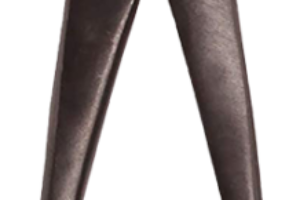Bonsai tree species
Bonsai trees for Beginners
Pine Species Used for Bonsai
Pines are one of the most popular species used for bonsai due to their elegant shape, distinctive needles, and versatility. Many different species of pine are well-suited to bonsai growing, each with its own unique features, growth habits, and care requirements. In this article, we’ll take a look at some of the most common pine species used for bonsai, as well as some tips and tricks for growing and caring for these beautiful trees.
Japanese Black Pine (Pinus thunbergii)
The Japanese black pine is a native of Japan and is one of the most popular species used for bonsai. It is a hardy tree that can withstand harsh growing conditions and is well-suited to both indoor and outdoor growing. This species of pine has a distinctive appearance, with long, dark green needles and a rough, bark-like texture.

When growing Japanese black pines for bonsai, it is important to keep the tree in full sun and to water it regularly. This species of pine is particularly sensitive to over-watering, so it’s important to allow the soil to dry out between waterings. Additionally, Japanese black pines are heavy feeders, so they should be fertilized regularly with a balanced, all-purpose fertilizer.
European Stone Pine (Pinus pinea)
The European stone pine is a native of Mediterranean regions and is well-suited to bonsai growing. This species of pine has a distinctive, rounded shape and long, feathery needles that are a light green color. Stone pines are slow-growing trees, but they are very hardy and can withstand a wide range of growing conditions.
When growing European stone pines for bonsai, it is important to keep the tree in full sun and to water it regularly. This species of pine is particularly sensitive to over-watering, so it’s important to allow the soil to dry out between waterings. Additionally, stone pines are heavy feeders, so they should be fertilized regularly with a balanced, all-purpose fertilizer.
Scots Pine (Pinus sylvestris)
The Scots pine is a native of Scotland and is well-suited to bonsai growing. This species of pine has a distinctive, rounded shape and long, needle-like leaves that are a light green color. Scots pines are hardy trees that can withstand a wide range of growing conditions, but they are particularly well-suited to outdoor growing.
When growing Scots pines for bonsai, it is important to keep the tree in full sun and to water it regularly. This species of pine is particularly sensitive to over-watering, so it’s important to allow the soil to dry out between waterings. Additionally, Scots pines are heavy feeders, so they should be fertilized regularly with a balanced, all-purpose fertilizer.
Lodgepole Pine (Pinus contorta)
The lodgepole pine is a native of North America and is well-suited to bonsai growing. This species of pine has a distinctive, cylindrical shape and long, needle-like leaves that are a light green color. Lodgepole pines are hardy trees that can withstand a wide range of growing conditions, but they are particularly well-suited to outdoor growing.
When growing lodgepole pines for bonsai, it is important to keep the tree in full sun and to water it regularly. This species of pine is particularly sensitive to over-watering, so it’s important to allow the soil to dry out between waterings. Additionally, lodgepole pines are heavy feeders, so they should be fertilized regularly with a balanced, all-purpose fertilizer.
Ponderosa Pine (Pinus ponderosa)
The ponderosa pine is a native of western North America and is well-suited to bonsai growing. This species of pine has a distinctive, cylindrical shape and long, needle-like leaves that are a light green color. Ponderosa pines are hardy trees that can withstand a wide range of growing conditions, but they are particularly well-suited to outdoor growing.
When growing ponderosa pines for bonsai, it is important to keep the tree in full sun and to water it regularly. This species of pine is particularly sensitive to over-watering, so it’s important to allow the soil to dry out between waterings. Additionally, ponderosa pines are heavy feeders, so they should be fertilized regularly with a balanced, all-purpose fertilizer.
Final Thoughts
Pines are a popular and versatile species used for bonsai due to their distinctive appearance, hardiness, and adaptability to a wide range of growing conditions. When growing pines for bonsai, it is important to keep the tree in full sun and to water it regularly, while allowing the soil to dry out between waterings. Additionally, pines are heavy feeders, so they should be fertilized regularly with a balanced, all-purpose fertilizer. With the right care and attention, pine bonsai trees can thrive and bring beauty and elegance to any bonsai collection.







Leave a Reply
Your email is safe with us.
You must be logged in to post a comment.